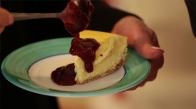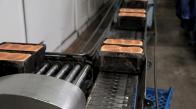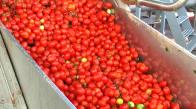Ritu Sehji empowers her senior food technology students by teaching about culinology and the work of Heston Blumenthal.
Authentic modern food contexts in senior programmes
Transcript
Ritu Sehji: During my fellowship I undertook a lot of reading, be it pedagogical reading or subject related. What I realised was in the past we’ve had students who’ve gone on to do food science and become food technologists but now it’s time to take it further.
So we know we can be food technologists, and we can be food scientists, but can we be culinologists. That was a new word I came across when I was reading the Food NZ magazine. It just made me think because there are very few culinologists in the world and just one or two in New Zealand. So I started to read more about it and culinology empowers students to learn about food technology, about food science, and the culinary arts.
Immediately when I thought about that, Heston Blumenthal come to mind. I had two projects for my year 13s and the first one was culinology where they're taught about the science and the structure and the reactions that the ingredients have when they’re mixed together, and the other one would be a Heston project they could then incorporate the knowledge, the skills, and the trialling and testing on a larger scale or a smaller scale like Heston does.
When I was on fellowship it gave me an opportunity to look at the technology curriculum and revisit the technology matrix. I realised that from a food technologist's perspective it was really important to know about planning, about processing technologies, about trialling and testing, prototyping, technological modelling and hence I revisited all the standards that we were currently teaching.
So we’ve highlighted a new matrix and we’ve changed. So what I thought was important was "All right, girls …" if a brief was already given to them "let's still develop the brief" , and then they do their planning anyway. So why couldn’t we assess them for planning ... and then conceptual design, because they’re designing, they’re following the food design process, and they’re designing their product before they make a prototype. But the main thing that I picked out was the crucial bit that needed to be assessed was the processing technologies. Because at level one, we do basic procedures and then we look at level two, and we look at advanced techniques, and then at level three we looked at complex techniques. And with the B Heston recipes and ideas, there is definitely room for complex techniques, because his recipes have so many more complexities and several different aspects to one food product.
Student one: I loved just researching and creating new products that were so different to what I was used to doing in other classes. It’s such a different subject that’s really self-directed and takes a lot of time, but is actually really fun and interesting.
Ritu Sehji: So what we thought was also, is it’s really important to understand the ingredients. So evaluating the ingredients or the materials that they were using was really crucial because they were doing it as a test. When they’re looking at functional properties and when they’re looking at a structure already, so why not get those standards because the students already know about it, they have the knowledge so why not get them to do an external, based on what they know and what they can write about.
Related videos
Food processing in a local environment – Hinterland Express Old Cottage Cakery (03:43)
Ann Davis makes pies and Christmas cakes in a cottage on the farm in Gisborne.
Food processing in a national environment – Walter Findlay Ltd (01:05)
Walter Findlay's makes bread that is distributed within Gisborne and up the east coast.
Food processing in a global environment – Cedenco Foods (03:28)
Cedenco foods in Gisborne makes ingredients that are sold on the domestic market and also sent to Asia.



